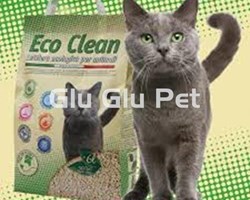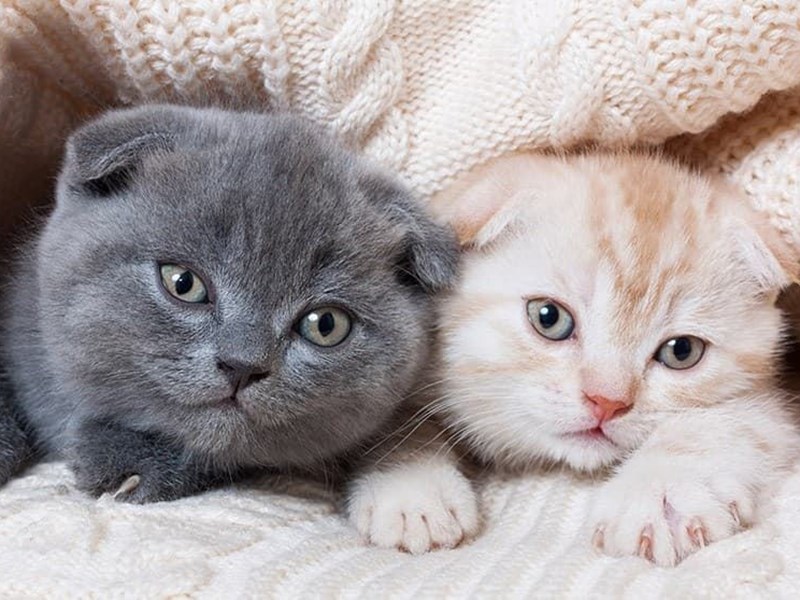
From Glu Glu Pet we recommend the internal and external deworming of cats.
We will help you distinguish between the internal ones: worms and tapeworms, and the external ones: ticks, fleas and other mites, so that you can find out how your cat can become infested and how it can affect its health.

Internal parasites:
- Lungworms.
- Heartworms.
- round worms.
- Hookworms.
- you had
External parasites:
- ticks
- Fleas.
With Glu Glu Pet you will discover first-hand information on the risks to which your cat is exposed, in addition to those to which you and your family are exposed, given that many cat diseases are caused by parasites, are zoonotic, and can be transmitted to people and affect our health.
For these reasons we recommend that you go to your veterinarian and ask him about the Double Monthly Protection, the internal and external protection of your cat.
If you do not know where the parasites hide or you think that if your cat does not leave the house, it cannot have parasites, it is time to know that in our environment there are numerous parasites that are highly harmful and even potentially deadly.
Thanks to this article you will be able to find out the risk that your cat has against the most frequent parasites, answering different questions about its lifestyle and its environment.
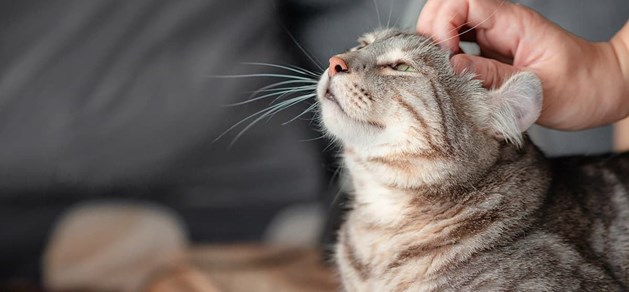
WHY DO WE RECOMMEND A MONTHLY DEWORMING?
Given that the life cycle of certain parasites is approximately one month, when there is a risk of infection by them, monthly deworming is recommended.
And if it is the Double Monthly Protection, you can protect your cat from the most frequent internal and external parasites in your environment at the same time.
From Glu Glu Pet and to keep up to date with all our news, we invite you to follow us on our Facebook profile.
WHAT ARE ZOONOSES IN CATS?
Zoonoses are those diseases that can be transmitted directly or indirectly between animals and people.
They can be caused by bacteria, viruses, fungi and parasites.
In the case of cats, which are part of family life and with whom we share spaces, it is very important to know at least the most frequent ones, how they can affect both our pet and our family, and follow certain guidelines to prevent them.
It is about maintaining adequate hygiene, a healthy diet, and complying with the vaccination and deworming plans recommended by our store, Glu Glu Pet, or by your trusted veterinarian.
WHAT ARE ZOONOSES IN CATS AND THEIR EFFECTS ON HUMANS?
RAGE:
It is a viral disease caused by a Lyssavirus of the Rhadoviridae Family that affects mammals and is transmitted by the bite or scratch of a sick animal.
It is a deadly disease that has no curative treatment.
How it affects the cat:
The disease goes through several phases of variable duration, beginning with changes in behavior and appetite, becoming increasingly nervous and aggressive with people and other animals, excessive salivation, vomiting, fever, and ends up dying from paralysis that evolves.
In Spain, rabies is considered a practically eradicated disease thanks to vaccination plans.
TOXOPLASMOSIS:
It is an infection caused by Toxoplasma gondii, a protozoan with a biological cycle that, in short, comprises two phases:
- Felines are the definitive hosts, Toxoplasma reproduces and lodges in its intestine, and eliminates the oocysts of the parasite through feces, being able to contaminate the soil, water or food.
- Mammals, including man, and birds are the intermediate hosts. Toxoplasma multiplies and lodges in the tissues; They become infected by ingesting the oocysts, eliminated by cats, in the water and plants or vegetables, and also by ingesting the meat of other mammals or birds that are in turn infected and carry parasite cysts inside.
A cat that eats a mouse or a bird with oocysts of the parasite in its tissues will excrete oocysts again after a few days.
Affected cats do not usually show symptoms.
In the case of people, the infection is caused by eating undercooked mammalian or poultry meat or vegetables that have not been well washed, by drinking contaminated water and also by handling cat feces with oocysts.
In addition, transplacental transmission may occur.
Although the vast majority of immunocompetent, non-pregnant people have no symptoms, the effects can be severe; in eyes, brain or generalized, in individuals with immune problems or for children during pregnancy.
FELINE LEISHMANIOSIS:
It is a disease caused by several species of the protozoan Leishmania and is transmitted by the bite of mosquitoes of the genus Phlebotomus.
It also affects dogs, other mammals and humans.
In cats, the disease is usually rare, the most frequent symptoms being inflammation of the lymph nodes, skin lesions, weight loss, eye lesions and others.
People become infected through the bite of sandflies, not through direct contact with dogs or cats.
BARTONELLOSIS OR CAT SCRATCH DISEASE:
Fleas inoculate cats with Bartonella henselae bacteria through their bites.
Cats carry the bacteria in their blood without showing symptoms.
Transmission to people is not from the cat's blood, but through cat scratches whose claws can carry flea feces contaminated with bacteria.
In man, it produces skin lesions, swollen glands and can affect various tissues and the liver in a very serious way.
TOXOCARIASIS:
Toxocara cati is a cat intestinal worm that can be transmitted to humans through the eggs passed by cats that are eliminated in the feces.
Cats become infected by ingesting parasite host mice or eggs directly from contaminated areas.
Kittens are the ones that most suffer from the disease, although highly parasitized adult cats can also do so.
Adult cats are a source of contamination.
Generally, these are digestive symptoms due to the presence of worms in the intestine of cats, although there may also be other symptoms such as respiratory symptoms.
Toxocariosis is a zoonosis that is very present in both developing and developed countries.
People can become infected in several ways:
- By direct ingestion of eggs that contaminate the environment (soil, etc.), ingestion of poorly washed vegetables or even the meat of other mammals that are infected.
- In people, the worms do not become adults, but the larvae that come out of the ingested eggs pass through various tissues, producing the so-called Larva Migrans Syndrome that has several manifestations. Children are the sector of the population most at risk.
Other examples of cat intestinal worms that can affect people are:
- caninum: causes a very serious disease in people called multilocular echinococcosis.
- Dipylidium: cats and people are infected by ingestion of fleas or lice with the larval stage.
DERMATOPHITES:
Microsporum canis is the main fungus that causes dermatophytosis or "ringworm" in cats that produces skin lesions and can be spread to humans.
Prevention and tips:
Visit the vet regularly and follow the monthly deworming plan.
Ask about the Double Monthly Protection that ensures the right dose at the right time to protect your cat both externally and internally, minimizing the risk of zoonosis transmission.
Comply with the vaccination plan for your pet recommended by your veterinarian.
Rabies vaccination in cats is mandatory by law in many areas of Spain and in many countries.
A healthy and balanced diet, ask in our Glu Glu Pet Store, the best food for your cat, which is essential for your cat's health and thus does not fall to parasites.
Hygiene measures:
- Cleanliness of the animal.
- Of its play areas and its accessories.
- Sandbox cleaning, with the precaution of using gloves.
- Wash our hands frequently.
Regularly check the condition of our cat's hair and skin.
Pay special attention in the event that our cat goes outside, has contact with other animals, can hunt or eat mice or other animals, insects or food that we do not know.
In the event that we are going to travel with our cat, consult with the veterinarian about possible risks of diseases at the destination.
At Glu Glu Pet we recommend that you especially remind children of the importance of all hygiene measures for both their cat and themselves, and quickly disinfect wounds or bites.
Our cats are very independent and curious animals, hunters by nature and very concerned about their hygiene and daily grooming.
Their feline instincts will end up putting them in a defenseless situation and in contact with some undesirable parasites.
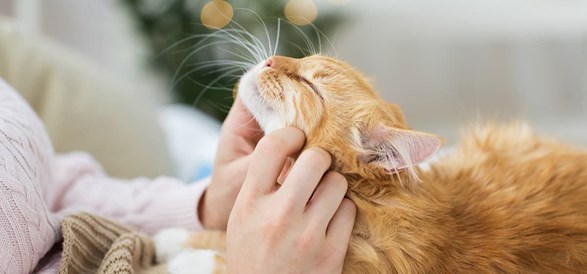
PARASITES: THE HOOK WORM.
In Europe, some studies suggest that up to 10% of the domestic feline population is, or will be, infested with hookworm and will end up suffering from an intestinal parasitic infection.
Ancylostoma tubaeforme, known as the hook worm, is a very harmful parasite common in southern Europe.
It acts like a true vampire, adhering to the intestine of our pet to feed on the blood and tissues that it steals.
Hookworm is the disease caused by this intestinal nematode.
It is a sometimes serious disease that causes blood loss and can endanger the life of our cat.
As it is a critical parasitosis, it is easily diagnosed and treated, but it is also a major risk for humans, since it is a zoonosis, and we can contract it through skin infection or direct ingestion derived from a bad food. hygienic praxis on our part.
Good preventive hygiene will be the best way to help our cat, controlling hookworm infections.
The hookworm life cycle is summarized as follows:
- The larvae begin their life after hatching from the eggs.
- These larvae will be infective in a few days.
- Our cat can be infected by direct ingestion of them, from the ground or contaminated media.
- It is also produced by simple contact and penetration through the skin.
- A very specific situation occurs when an infected female can end up transmitting the parasite to her young through the milk with which she suckles them.
- Unlike the case of dogs, in cats the possibility of contagion through the placenta during pregnancy has not been established.
- The larvae enter the cat and in the intestine we will have the adult worms.
These worms are small, with a rounded silhouette and a characteristic hook shape on their front part, where their mouth with sharp teeth is located.
It is precisely these teeth that it uses to pierce the skin and reach the blood supply, and to attach itself to the intestinal walls of our pet from where they will suck its blood.
These worms will produce the eggs.
The infected cat will be the originator of the new life cycle that the worm needs, finally expelling the eggs in its feces.
The signs and severity of hookworm infection depend on the number of parasites present in the animal, so if we detect any symptoms, we should go to our veterinarian to perform a microscope examination in search of the parasite in the feces.
The most notable and common symptoms of this disease are:
- Dark stools and diarrhea due to the presence of blood.
- Signs of anemia with pale gums and mucous membranes.
- Weight loss, malnutrition and physical weakness.
- Messy and dull hair.
- Apathy and low mood.
- Cutaneous signs and respiratory signs when disease progresses.
It is very convenient to monitor the hygiene of the cat's environment, with regular disinfection of the areas it frequents and the litter tray, and prevent pets from ingesting garbage or rolling around on land suspected of being contaminated with larvae, although very often this is going to be hard to get.
The best preventive measure will be to periodically take our cat to the veterinarian, to carry out the analyzes and deworming that he prescribes, and visiting our specialized store, Glu Glu Pet, where we will serve you the best products for a better deworming, thus guaranteeing the protection of our cat. cat inside and outside your body through a trusted Double Monthly Protection.
WHY IS IT SO IMPORTANT THAT I DEWORM MY CAT?
In our environment there are numerous parasites that are highly harmful and even life-threatening for our cat.
As we have already mentioned earlier in this article, many of these diseases are zoonotic and can be transmitted to people.
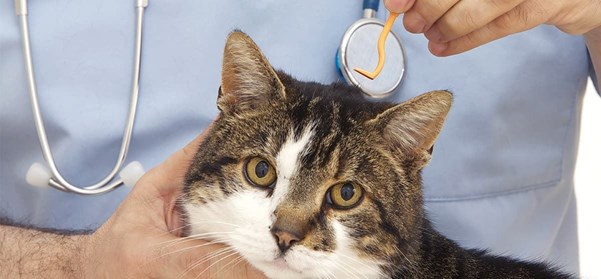
WHY IS A COMPLETE DOUBLE DEWORMING RECOMMENDED?
There are many options to deworm your cat, although most only offer external protection: fleas and ticks, or internal: worms and tapeworms, and not both.
Therefore, a Complete Double Protection is recommended so that your pet is protected against internal and external parasites every day of the year and in the same shot.
HOW TO DEWORM YOUR CAT?
At Glu Glu Pet we recommend that it is necessary to adapt the deworming program to the characteristics of your cat, since the treatment against internal and external parasites will vary according to age, lifestyle and geographical area; where you live and where you move.
In our store, Glu Glu Pet and your veterinarian we will recommend the most suitable one.
To achieve protection against the most frequent cat parasites, a monthly deworming adapted to the characteristics of your cat will be the most effective option.
Ask at Glu Glu Pet or at your veterinarian, for Double Complete Antiparasitic Protection, and prevent your cat, and your family, from catching the most common parasites in your environment.
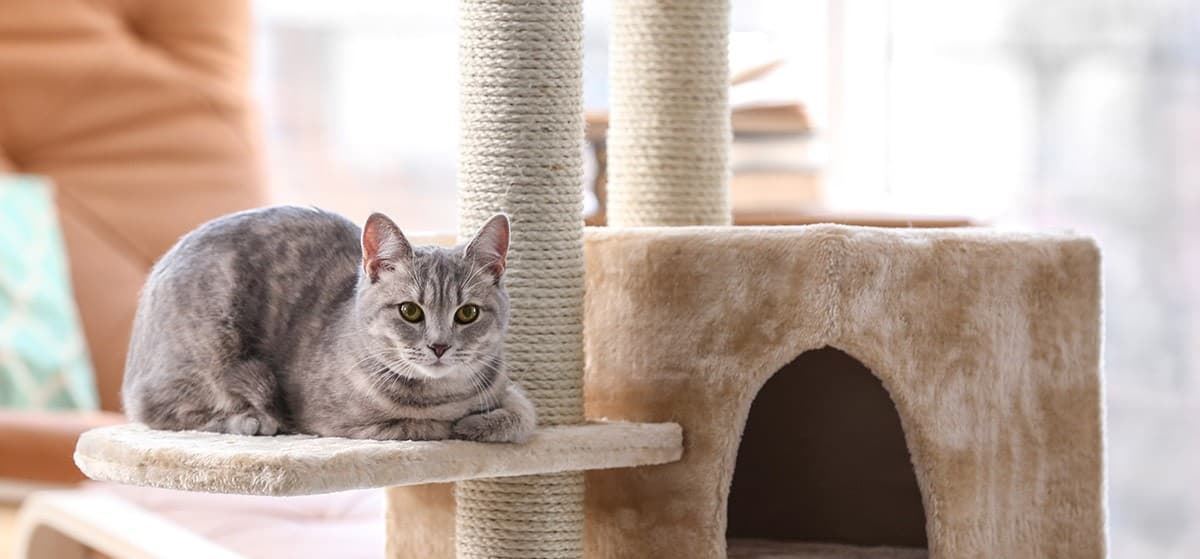
WHAT DO WE RECOMMEND YOU AT GLU GLU PET WHEN CHOOSING AN ANTIPARASITIC PRODUCT?
- Protection against worms, fleas, ticks and other mites.
- Prevention of contagion to the family.
- Monthly administration.
- Comfortable and safe applicator for cats.
PARASITES: THE CAT FLEA.
The cat flea does not fly, but it runs a lot and jumps.
Relative to their tiny size, fleas are a great little enemy.
If we detect the presence of these small parasites in our cat, it is important that we start the deworming process as soon as possible to prevent the infection from getting worse and also the plague from spreading to our home.
The fleas that we find most frequently on cats is called Ctenocephalides felis.
It is a parasite of just a few millimeters, flattened and elongated, dark in color, and very hard, it is almost impossible to kill it by crushing it with the fingertips.
HOW IS THE FLEA CYCLE IN CATS?
Two days after having settled on our cat, the female flea can lay 30 to 50 eggs a day that will fall from the animal's fur along with the flea's feces.
These feces accumulate remains of undigested blood and will be the sustenance of the larva allowing its development.
The larvae will hide in places away from light, such as carpets or upholstery, where they will evolve into chrysalises encased in a sticky cocoon.
Inside the cocoon, the flea will reach the adult stage and will emerge in a matter of seconds and jump on our cat, who has approached.
The flea feeds on the blood of our cat.
The first thing he will do is inoculate his saliva into the wound he has caused to prevent the blood from coagulating and ensure that the wound does not close and that he can suck for longer and in the same place.
WHAT SYMPTOMS ARE SEEN IN A CAT WITH FLEAS?
The main symptom of a flea infestation is itching, which will make our cat scratch, lick or bite frequently, and wounds or eczema may appear.
If we observe these behaviors, we should explore your body for fleas.
With the naked eye it is difficult to locate a flea due to its small size and its rapid movements.
We will be able to more easily find their droppings and thus detect the infestation.
If we comb the cat on a light surface and collect the dark crumbs that have fallen from its fur with a damp handkerchief, we will observe that the crumbs dissolve and red stains appear due to the blood that forms the excrement.
If we have found these signs of the presence of fleas, the next step will be to go to our specialized store, Glu Glu Pet or your veterinarian so that we can prescribe an efficient anti-flea method for our cat, such as antiparasitic pipettes.
HOW DO FLEAS HARM THE CAT'S HEALTH?
Fleas are not only uncomfortable, but can also have harmful effects on the cat.
Derived from the loss of sucked blood, symptoms of anemia, weakness and even death may appear in kittens.
As a rejection of the sting, an allergic reaction with strong itching and occasionally skin diseases may appear.
During grooming, the cat can ingest a flea and transfer the infectious agents that it has carried to its digestive system, including tapeworm eggs and some bacteria that can damage the cat's red blood cells.
One of the most important preventive measures is to have the house and the environment free of fleas.
Once we have rid our cat of the uncomfortable fleas, we must make sure that no other fleas are still present in the spaces where they usually sleep, play, rest or scratch.
There are multiple methods at our specialty store, Glu Glu Pet, to do this effectively.
It is advisable to act preventively on the animal by going to our specialized store, Glu Glu Pet, or to your trusted veterinarian to ask them to make us an adequate preventive plan that includes Double Monthly Protection against internal and external parasites: protecting our pet from worms, fleas, ticks and other mites.
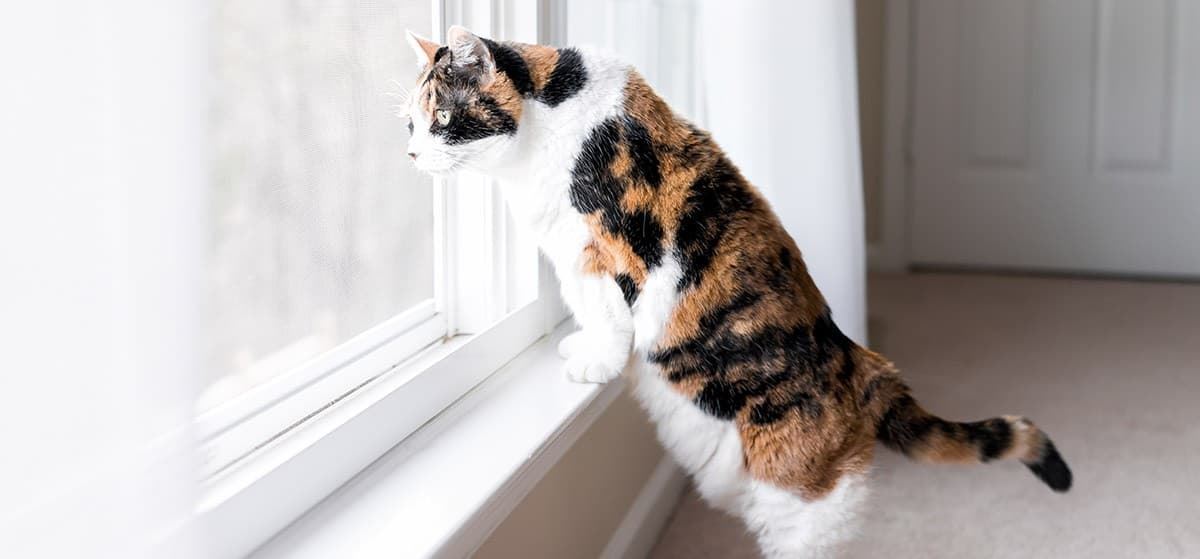
PARASITES: THE HEARTWORM IN CATS, AN UNSUSPECTED RISK.
His tranquility is usually absolute because it is believed that our cat, by spending most of his time indoors, is exposed to far fewer parasites.
The domestic cat is an atypical host of the Dirofilaria immitis parasite, a worm of the nematode family, known as heartworm because it enters through the pulmonary system and tries to reach the heart.
The incidence of heartworm in cats is 10 times less than the incidence of heartworm in dogs; however, diagnosis of infection in cats is more difficult and these incidences are likely to be higher.
The propensity to develop parasites is lower, they typically acquire fewer and smaller worms, and the infection period is shorter, around 2-4 years.
In the cat they cause more problematic infections that, due to their lower frequency of incidence, can lead to wrong diagnoses and pose a serious danger to the cat.
The usual age of infected cats is between 3 and 6 years.
Heartworm infection begins with the bite of a mosquito that transmits larvae through its saliva.
They migrate through the tissues until they reach the pulmonary vasculature 3-4 months after inoculation.
The cat has a good immune response and therefore many larvae die when they enter the lung, so that only about 2-4 parasites become adult worms and can remain lodged in the pulmonary arteries.
It is rarer for cats to have heartworms.
The disease in cats can be more serious than in dogs.
When the larvae enter the pulmonary vasculature, the cat may develop respiratory illness, which can sometimes be severe.
The few larvae that survive and evolve into adult worms live in the pulmonary arteries without causing signs in cats. When these worms die over time, they again cause a process in the cat that can lead to its death, so that the death of even a single worm can kill the animal.
Some cats may remain asymptomatic and never show signs of illness.
Clinical signs of parasitic heartworm infection are highly nonspecific.
Diagnosis by clinical signs alone is very difficult.
These are usually respiratory and gastrointestinal signs and can be acute or chronic.
We can stand out:
- Exercise intolerance, lethargy, lack of energy, difficulty walking.
- Loss of appetite, weight loss, anorexia.
- Cough, shortness of breath, rapid breathing.
- Intermittent vomiting, diarrhea.
- Tachycardia, seizures, shock, fainting.
- Anxiety, open mouth.
- Sudden deaths can occur without other obvious signs.
Treating feline heartworm disease is not easy, so prevention of the disease in cats living in areas where dog disease occurs is very important, even for indoor cats, as mosquitoes can get inside the dwellings.
The best thing is to apply a good monthly prophylaxis, which in our store, Glu Glu Pet, we recommend its application, especially coinciding with the hot and humid times of greater activity of mosquitoes.
The plan will include the administration of Double Monthly Protection against internal and external parasites, using the most suitable antiparasitic.

PARASITES: DIPYLIDIUMS AND TAPEWORMS IN CATS, THE SILENT THIEVES.
There are some silent thieves who, with absolute discretion, stay inside our cats and subsist comfortably at the expense of their diet.
WHAT ARE DIPYLIDIUM OR TAPEWORMS IN CATS?
Dipylidium and tapeworms are worms that behave like internal parasites of the intestine, present throughout the world, and that affect cats, and can also infest humans, although this is quite occasional and difficult.
They are flat worms, cestodes, whitish in color, which reach several centimeters in length and have a body divided into segments, with a head equipped with hooks and suckers to adhere to the intestinal walls of their host.
They are hermaphroditic worms that harbor their eggs in the posterior segments of their body to get rid of them, to release them to the outside along with the cat's feces.
HOW IS THE LIFE CYCLE OF DIPYLIDIUM OR TAPE IN CATS?
Before becoming an adult worm inside the cat, the definitive host, the Dipylidium or the tapeworm must go through one or two larval stages inside other intermediate hosts, which can be mainly rodents, in the case of tapeworms, or fleas, in the case of tapeworms. case of Dipylidium, which have ingested the feces of infected cats and some freshwater fish.
In the case of rodent-hunting cats, it is easy for the larvae developed inside the rodent to reach the cat's digestive tract, settle there until they transform into adult worms and lay eggs to start a new life cycle.
More common is infestation through the ingestion of other external parasites, fleas, which act as intermediaries.
If the cat is infested by fleas that have ingested Dipylidium eggs, it is very common that, during grooming and grooming, our pet ingests some by licking its hair and then the fleas reach the feline's stomach, where they will decompose and release the larvae which will latch onto the lining of the small intestine and start the life cycle of the tapeworm.
WHAT ARE THE SYMPTOMS OF A TAPEWORM INFECTION?
Infections by tapeworms or Dipylidium are asymptomatic, or they only present a certain itching and anal irritation due to the presence of fragments of the tapeworm around the anus, which will cause frequent licking of the perineum.
Only in cases of high infections, such as tapeworms, the symptoms can be more severe and produce signs that may include the following:
- Intestinal obstruction caused by the multiplication of cestodes over a long period of time until producing a mass of worms that plugs the intestine and can cause vomiting, constipation, diarrhea and abdominal pain. As a consequence, there may be a decrease in appetite and a rejection of daily food.
- Metabolic disorders produced by the subtraction of nutrients carried out by the tapeworm. As a consequence, signs of malnutrition, weight loss, poor-looking hair and growth problems will appear in the puppies.
To prevent the spread of the tapeworm, it is advisable to avoid feeding uncooked meat or fish, and outside, prevent our cat from eating dead animals or capturing wild rodents.
It is very important to maintain a proper hygienic habit, avoiding and eliminating fleas, and controlling the cleanliness of the environment where our cat lives.
It is advisable to deworm the animal by going to our specialized store, Glu Glu Pet or to your trusted veterinarian to ask him to make us an adequate preventive plan that includes a Double Monthly Protection that protects him against internal and external parasites.
Bibliography:
-ESCAP Guides
-Feline infectious diseases, M. Luisa Palmero and Vanesa Carballés. Ed. Servetus 2010.

